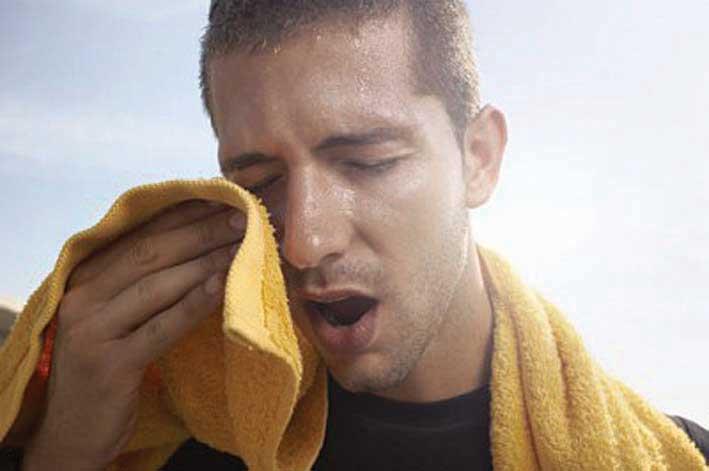Back in January many of us made a resolution to exercise regularly. If you kept that promise to yourself, you must now be looking forward to showing off the results on the beach. Keep up the good work, but take precautions.
Exercise itself and the surrounding air temperature increase your whole body temperature. Your body tries to cope with the temperature increase partly by directing blood to the skin's surface to help release excess heat. This leads to less blood reaching the working muscles which then struggle to keep up with the intensity of the exercise. Your heart beats faster, increasing the risk of various heat-related illnesses such as stroke, cramps and exhaustion, which need immediate medical attention.

Stop immediately if notice certain symptoms - Fatigue, nausea, a sense of weakness, extensive sweating, blurred vision and dizziness are signs that your body temperature is rising abnormally and your heart is beating too fast. In case of any one or a mixture of these symptoms, stop and get out of the heat immediately. Call for help and drink water right away. Loosen any tight clothing. As soon as someone arrives, ask them to apply a cold compress to help you cool off. Even a wet towel will do as first aid.
Be aware of weather forecasts - Pay attention to heat wave alerts. In a climate like ours, avoid exercise between 10am and 5pm. If possible, try to exercise in a shady area and if temperatures are very high avoid going outdoors. Instead, work out in the pool or in an air-conditioned gym.
Be aware of your fitness level and talk to an expert about the type of training programme you should pursue during summer. If you are new to exercise or if you suffer from a chronic condition, you need to follow a planned programme which includes low intensity exercise and frequent breaks.
Drink plenty of fluids and wear appropriate clothing - If you still choose to exercise intensely, try replacing water with a sports drink as they can replace the minerals you lose through sweating. Drink frequently. Do not wait until you feel thirsty. You definitely should avoid drinking alcohol especially the evening before your training because it will aggravate the risk of dehydration. Choose clothing which allows sweat to evaporate. Lightweight and light coloured clothing helps you keep cooler. If possible wear a cap or hat to protect your head.

Try a different programme - Always have a backup plan. If you feel tired or if humidity is so high that temperatures are high even in the evening, do something cooler. Go for a swim or else look for an air-conditioned fitness centre for your training. You can also try developing different habits during the day, such as climbing stairs at work instead of using the elevator. These new habits can then become part of your routine and add-ons to your exercise programme even during cooler months.
Cool-down and stretch - Cooling-down is an integral part of training sessions and when training in high temperatures, it is a must to end your programme with cool-down and stretching exercises. Cooling-down helps your heart rate get back to normal and avoids the pooling of lactic acid in the muscles. Take a shower as soon as possible afterwards to help your body temperature return to normal.›‹
Anna Maria Gatt is a qualified physical education teacher, currently reading for a Masters degree in physical education and sport pedagogy.